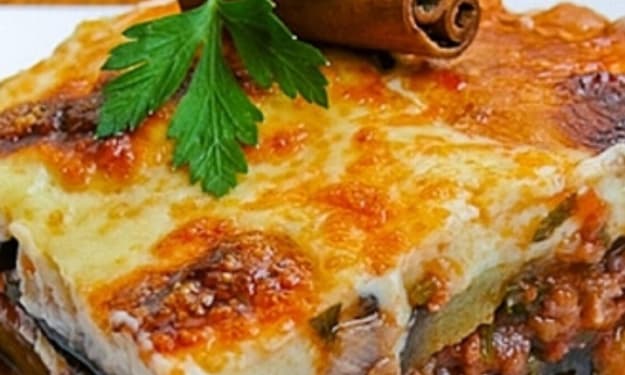A Gastronomic Expedition to Spain - Specializing in Paella Technique
Mastering the Art of Paella: A Step-by-Step Culinary Symphony from Spain

Overview :
Valencia is the birthplace of the popular Spanish dish paella. Thanks to its delectable fusion of rice, saffron, and a range of proteins, this dish has become synonymous with Spanish cuisine. This recipe will walk you through the process of making a traditional Valencia paella, however there are plenty of regional variants.
Components:
- Two cups of Calasparra or Bomba rice
- One rabbit, sliced into pieces
- One chicken, sliced
- half a cup of olive oil
- One onion, chopped finely
- 4 minced garlic cloves
- two grated tomatoes
- One sliced red bell pepper
- One sliced green bell pepper
- A bunch of blanched green beans
- Half a cup of lima beans
- One teaspoon of paprika sweet
- A small pinch of thread saffron
- Four cups of chicken stock
- To taste, add salt and pepper.
- slices of lemon for serving
Tools:
- Pan for paella (or a shallow, broad skillet)
- wooden spoon
- The chef's knife
- chopping block
- Grater
Method:
Note: Although paella is often prepared outside over an open flame, an oven or gas stove can be used instead.
1. Get the ingredients ready:
Before beginning to cook, make sure all ingredients are measured and ready.
Save the bones for taste while chopping the chicken and rabbit into bits.
2. Add Saffron:
Crush the saffron threads in a small basin and soak them in two teaspoons of warm water. As you are preparing the other ingredients, let it infuse.
3. Preheat the pan for paella:
Add the olive oil to the paella pan and place it over medium-high heat.
All sides of the chicken and rabbit pieces should be browned. Take out and place aside.
4. Aromatic Salute:
Add minced garlic and chopped onions to the same pan. Sauté the food until it becomes tender.
Add the grated tomatoes straight to the pan and heat it until it becomes a sortie.
5. Include the veggies:
Add the lima beans, green beans, and sliced bell peppers and stir.
Add pepper, salt, and sweet paprika for seasoning.
6. Include Rice:
Stir the rice in the skillet to evenly coat it with the flavorful mixture after adding it.
7. Ladle in Saffron and Broth:
Add the water infused with saffron and the chicken broth.
After bringing the mixture to a low boil, lower the heat so that it simmers.
8.Organize the Protein:
Place the chicken and rabbit pieces that have been fried inside the rice mixture.
To produce the scarred, a wonderful crust on the pan bottom, let it simmer without stirring.
9. Continue Cooking till done:
Simmer the rice until it has absorbed the liquid and developed a crust on the bottom.
Make sure the proteins are cooked through; the chicken and rabbit should be soft.
10. Take a Break and Serve:
After taking the paella from the stove, give it some time to rest.
Accompany with wedges of lemon.

Of course Let's carry on our culinary exploration with the last stages of the paella's preparation and some extra advice to make cooking more enjoyable.
11. Presentation and Garnish:
Add some freshly cut parsley to the Paella before serving to give it a vibrant pop of color and more freshness.
You may also arrange lemon wedges along the edges of the pan for a decorative touch.
12. Wine Pairing:
Paella goes nicely with Spanish wines such as Tempranillo or Albariño. The dish's strong tastes go well with these wines' rich, fruity undertones.
13. Ideas for Serving:
To display Paella authentically, serve it straight from the pan.
To bring out the tastes in their portions, encourage your guests to squeeze lemon over them.
14. Modifications:
Investigate several Paella incarnations according to your inclinations and accessible components. Popular substitutes include seafood paella, mixed paella (combining meat and seafood), and vegetarian paella.
15. Perfection of Socarrat:
Careful cooking is necessary to get the ideal socarrat, or crispy rice layer at the bottom. To get that desired crust, turn up the heat a little bit toward the finish of cooking, but watch out not to burn it.
16. Cooking outside:
Use a classic Paella burner to cook Paella over an open flame outside for a true taste of the cuisine. Improved heat distribution is possible with this technique.
17. Remaining Food:
Paella reheats well, although the crispiness of the socarrat may disappear. Reheat it on the stovetop to get the bottom crust crisp up once more.
18. Savoring the Procedure:
Making paella is a process as much as a product. To create a happy and community cooking experience, invite your friends and family to join you in the kitchen.
19. Ambience and Music:
While you cook and eat, play some traditional Spanish music in the background to create a more festive environment. Create a scene that transports you to the vibrant streets of Valencia.
20. Accept Your Flaws:
A rustic cuisine, paella can have subtle variations from batch to batch. Accept the flaws in your work; they give it personality.
In summary:
As you explore the world of paella, keep in mind that the essence of this meal is found in the communal and cultural components of its preparation as much as in its flavors. Savor the flavors, take pleasure in the preparation process, and savor this traditional Spanish dish's rich, varied flavor. May the warmth, happiness, and flavor of Spain that your paella brings to your table. ¡Buen provecho y salud!
Thanks For Supporting





Comments (1)
Great job! Keep up the fantastic work